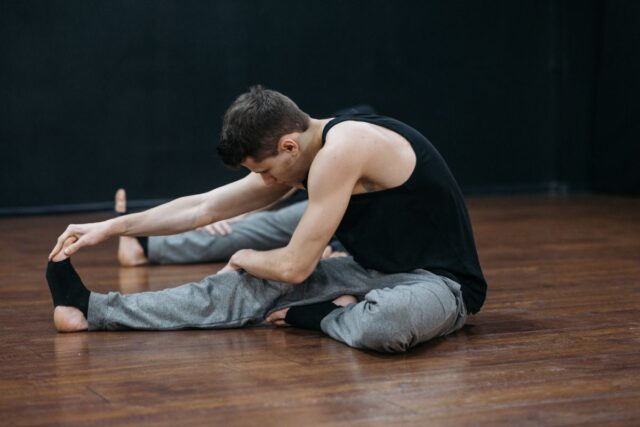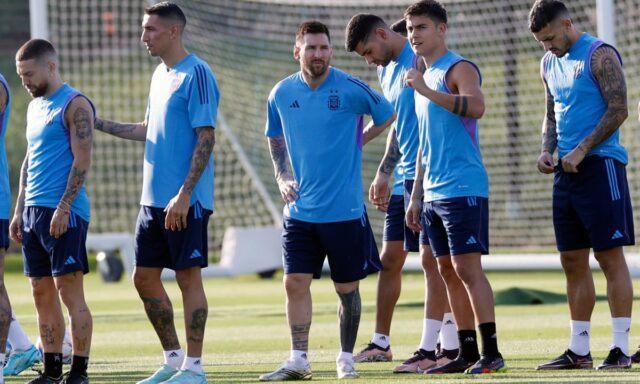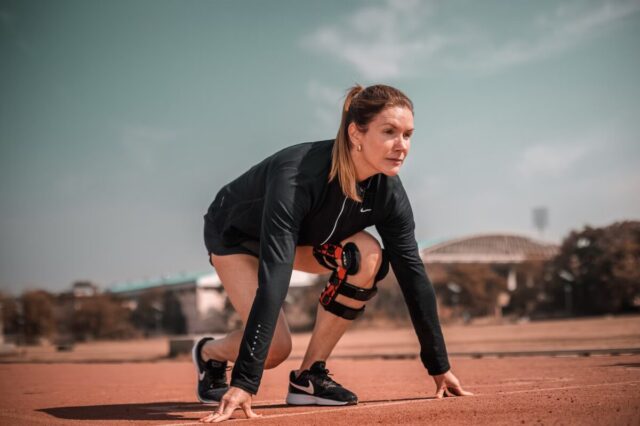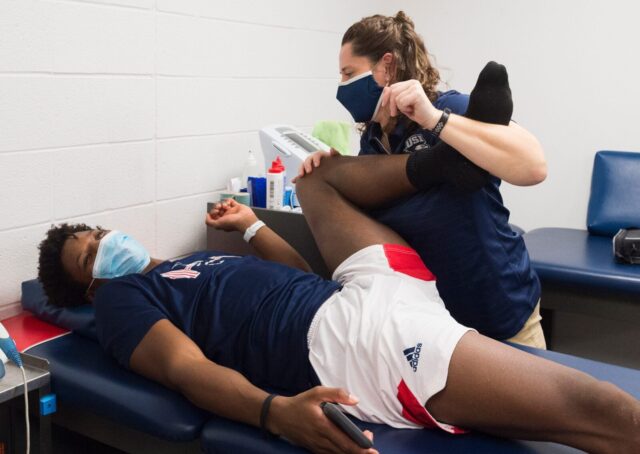
The world of sports is characterized by intense physical activity and the pursuit of peak performance. However, injuries, especially those affecting crucial muscle groups like the hamstrings, can significantly impact an athlete’s career and team’s success. Among the most common and dreaded injuries for athletes are hamstring injuries, which often occur due to sudden accelerations, decelerations, or excessive stretching of the hamstring muscles. In recent years, a game-changer has emerged in the form of hamstring braces. These specialized support devices have been gaining popularity and making a significant impact on the sports world. This article explores the role of hamstring braces in sports, their effectiveness, and why athletes are increasingly turning to them for both injury prevention and performance enhancement.
Understanding Hamstring Injuries

Hamstring injuries are prevalent among athletes, particularly in sports that involve quick bursts of acceleration and deceleration, such as football, soccer, and track and field. The hamstrings, a group of three muscles located at the back of the thigh, play a vital role in hip and knee movement. When subjected to excessive strain or force, the hamstring muscles are susceptible to injury, resulting in tears or strains. These injuries can sideline athletes for weeks or even months, affecting their training, game time, and overall performance. Therefore, finding effective measures to prevent and treat hamstring injuries is of utmost importance in the world of sports.
The Role of Hamstring Braces
Hamstring braces, also known as hamstring supports or sleeves, are orthopedic devices designed to provide support, stability, and compression to the injured hamstring muscles. These braces are typically made of neoprene or similar materials that offer both flexibility and firmness. The primary goal of hamstring braces is to limit excessive movement of the injured muscles, reduce muscle strain, and allow the damaged tissues to heal effectively. Moreover, they can also be used as preventive measures to reduce the risk of hamstring injuries during intense physical activities.
Types of Hamstring Braces
Hamstring braces come in various types and designs, each catering to different levels of injury severity and individual preferences. One of the most common types is the simple compression sleeve, which provides uniform pressure to the injured area, aiding in pain relief and circulation. Another type includes braces with straps and hinges that offer additional support and stabilization. These hinged braces allow controlled movement while preventing sudden, jarring motions that may aggravate the injury. It is crucial for athletes to choose the right type of brace based on their specific needs and the recommendations of sports medicine professionals.
Research and Effectiveness

The effectiveness of hamstring braces has been a subject of interest for researchers and sports medicine practitioners alike. Several studies have investigated the impact of hamstring braces on injury recovery and prevention. According to a study published in the “American Journal of Sports Medicine,” the use of hamstring braces has shown promising results in reducing the recurrence of hamstring injuries in athletes. The research highlighted that athletes who utilized hamstring braces experienced shorter recovery times and were less likely to suffer from subsequent hamstring injuries.
Hamstring Braces vs. Other Treatments
When athletes sustain hamstring injuries, traditional treatment methods often involve the RICE protocol (Rest, Ice, Compression, and Elevation), physical therapy, and a gradual return to sports activities. While these methods are effective, they may require a more extended recovery period during which athletes must refrain from participating in their respective sports fully. Hamstring braces, on the other hand, offer a proactive approach that allows athletes to remain active while protecting and supporting the injured muscles. However, it is essential to recognize that hamstring braces are not a substitute for proper rehabilitation and physical therapy. Instead, they should be seen as a complementary measure to aid in the recovery process.
Tips for Using Hamstring Braces
Proper usage of hamstring braces is critical to maximizing their benefits. Athletes should ensure a snug and comfortable fit, as a poorly fitting brace may cause discomfort or chafing. Additionally, athletes must follow recommended wearing instructions, as prolonged or improper use may lead to adverse effects. It is essential to strike a balance between brace usage and targeted rehabilitation exercises, as excessive reliance on the brace may result in weaker muscles over time.
Famous Athletes and Hamstring Braces

Many prominent athletes across various sports have incorporated hamstring braces into their training and recovery routines. Notable soccer stars, such as Cristiano Ronaldo and Lionel Messi, as well as Olympic sprinters like Usain Bolt, have been known to use hamstring braces. These athletes have not only returned to peak performance after injury but have also credited the use of braces for prolonging their careers and preventing recurrent injuries. The endorsement of hamstring braces by such high-profile athletes has contributed to the increased popularity of these devices within the sports community.
Injury Prevention and Performance Enhancement
In addition to aiding in injury recovery, hamstring braces have a valuable role to play in injury prevention. By providing support and stability to the hamstring muscles during physical activities, these braces help reduce the risk of muscle strains and tears. Athletes who have experienced hamstring injuries in the past can especially benefit from the preventive properties of hamstring braces. Moreover, some athletes have reported improved confidence and enhanced performance while wearing the braces, leading to better overall results on the field.
Addressing Concerns and Misconceptions
As with any emerging technology or treatment method, there are misconceptions and concerns surrounding the use of hamstring braces. One common misconception is that constant reliance on the brace can lead to weakened muscles. While it is essential to strike a balance between brace usage and targeted muscle-strengthening exercises, research has not shown hamstring braces to cause long-term muscle weakness when used appropriately. Furthermore, some athletes may worry about potential side effects or skin irritation caused by the brace. However, such issues are often minor and can be addressed through proper fit adjustments and wearing guidelines.
The Future of Hamstring Braces

As the field of sports medicine continues to advance, hamstring braces will likely see further improvements in design, materials, and functionality. Technological advancements, such as the integration of smart sensors to monitor muscle movement and activity, may enhance the overall effectiveness of hamstring braces. Furthermore, ongoing research into biomechanics and injury prevention will likely contribute to more tailored and specialized brace designs that cater to the unique needs of individual athletes.
Cost and Accessibility
While the benefits of hamstring braces are evident, questions of affordability and accessibility arise. Hamstring braces are available at various price points, and their cost can vary depending on the type and brand. While some high-end braces with advanced features may be relatively expensive, simpler compression sleeves can be more budget-friendly. Additionally, the accessibility of hamstring braces may differ based on geographic location and the availability of sports medicine resources.
Athletic Trainers and Coaches’ Perspective
Athletic trainers and coaches play a vital role in guiding athletes in their use of hamstring braces. Their expertise in sports medicine and rehabilitation enables them to provide valuable insights and recommendations regarding brace usage. Athletic trainers often work closely with athletes to ensure that the brace is fitted correctly and that it complements the overall treatment plan. Coaches, on the other hand, may integrate hamstring brace usage into athletes’ training programs to enhance performance and minimize injury risks.
In conclusion, hamstring braces have rightfully taken the sports world by storm, emerging as a game-changing solution for safeguarding athletes’ careers and well-being.

Research has shown that hamstring braces can significantly reduce the recurrence of hamstring injuries and shorten recovery times, allowing athletes to return to their sports activities more quickly. However, it is essential to recognize that hamstring braces are not a panacea for hamstring injuries, and they should be used as part of a comprehensive treatment plan that includes proper rehabilitation and physical therapy. Additionally, athletes must be mindful of striking a balance between brace usage and targeted muscle-strengthening exercises to maintain overall muscle health and function.
As the field of sports medicine continues to evolve, BLITZU and other manufacturers are likely to see further advancements in hamstring brace design and functionality. These improvements will further enhance their effectiveness in supporting athletes’ recovery and performance goals. As more athletes and sports medicine professionals recognize the value of hamstring braces, these game-changing devices will become even more accessible and integral to the world of sports.









